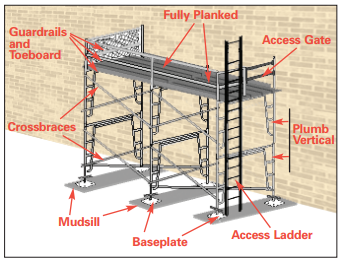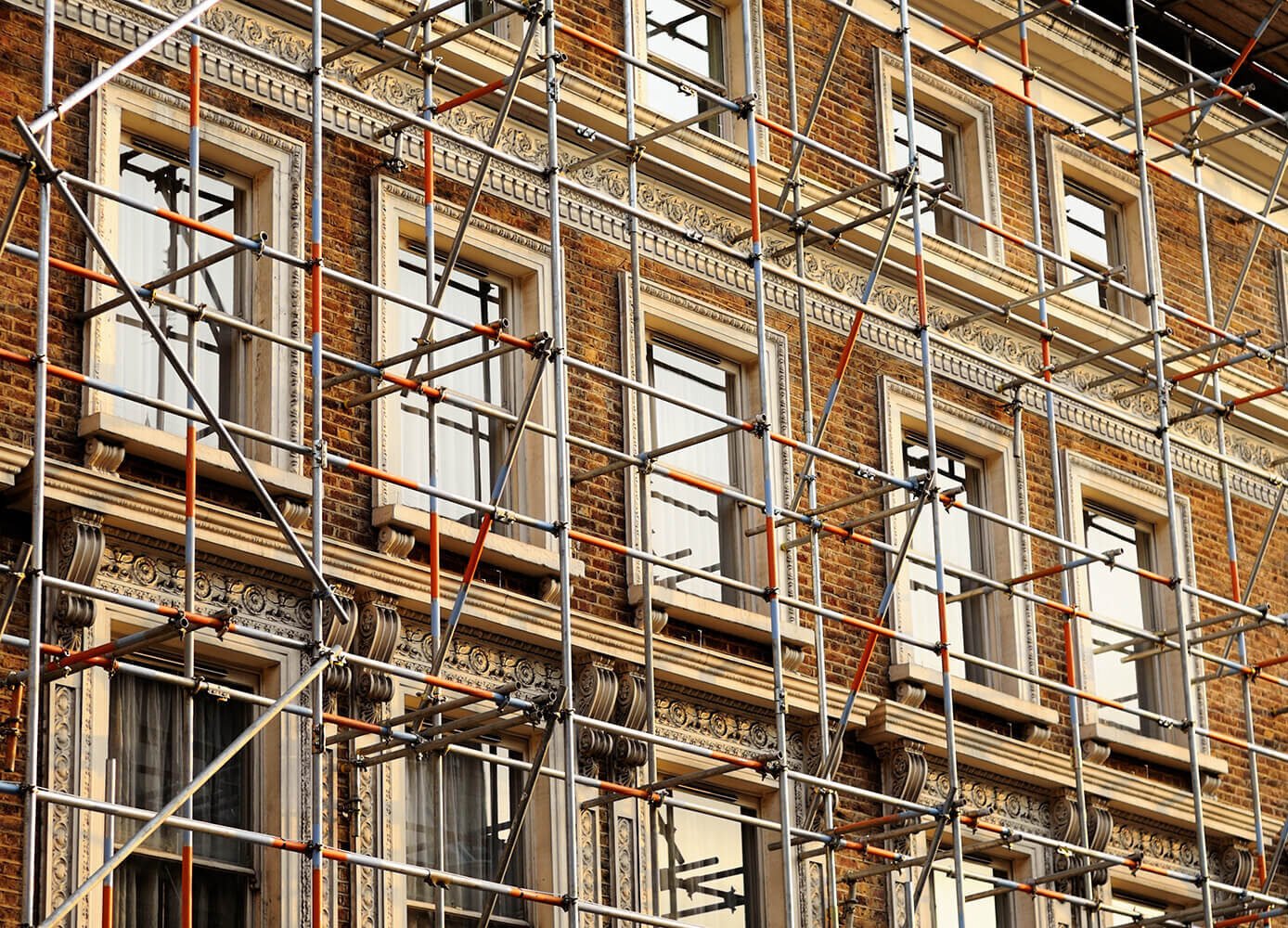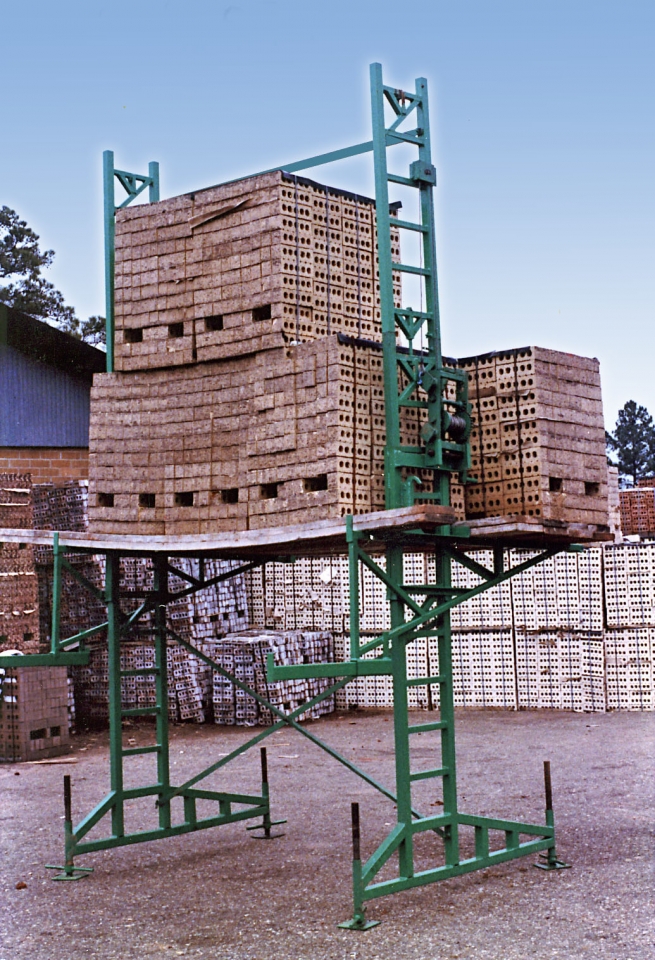Find Reliable Scaffolding Services in Surrey for Your Project Needs
Find Reliable Scaffolding Services in Surrey for Your Project Needs
Blog Article
Checking Out the Numerous Sorts Of Scaffolding Used in Building Jobs
The building and construction industry relies heavily on different kinds of scaffolding to meet particular task requirements, each offering distinct benefits and applications. Typical frame scaffolding provides a durable foundation for basic jobs, while put on hold scaffolding is crucial for work on skyscraper frameworks.

Conventional Structure Scaffolding
Traditional framework scaffolding is among one of the most widely made use of methods in the building and construction sector as a result of its toughness and convenience. This system includes vertical and straight structures that are assembled to develop a stable system for materials and employees. The primary parts consist of upright posts, straight journals, and diagonal dental braces, which with each other supply a strong framework that can sustain substantial lots.
One of the crucial benefits of standard framework scaffolding is its flexibility to different building tasks, varying from household buildings to huge industrial frameworks. The modular style enables easy setting up and disassembly, making it reliable for both short-term and long-term projects. Additionally, the system can be customized in elevation and width, suiting different structure styles and site problems.
Safety is extremely important in scaffolding applications, and conventional framework systems are furnished with guardrails and toe boards to avoid drops and make sure employee defense. Regular inspections and adherence to safety laws are essential in preserving the honesty of the scaffold (Scaffolding). Generally, standard frame scaffolding stays a basic option in the construction industry, offering a trusted system for labor and improving total project efficiency

Suspended Scaffolding
Suspended scaffolding offers an one-of-a-kind service for building projects that require access to elevated surfaces, especially in scenarios where conventional frame scaffolding may be not practical. This type of scaffolding is typically suspended from the roofing system or upper levels of a structure, utilizing a system of platforms, pulleys, and ropes to produce a functioning space that can be gotten used to various heights.
Among the primary advantages of suspended scaffolding is its adaptability. It can be quickly repositioned or lowered to accommodate modifications in building demands, making it suitable for tasks such as window installation, frontage job, and upkeep on skyscraper structures. In addition, the minimal impact of put on hold scaffolding enables much better use ground room in city atmospheres, where room is often limited.
Safety is an important consideration in the use of suspended scaffolding. In general, put on hold scaffolding supplies a effective and reliable option for accessing hard-to-reach locations in different building and construction situations, boosting both efficiency and safety and security on site.
System Scaffolding
System scaffolding, typically considered as a modern-day option in the scaffolding market, includes pre-engineered elements that can be rapidly assembled and adapted for different construction tasks. Scaffolding. This kind of scaffolding is characterized by its modular style, which permits versatility and performance on work sites, fitting different elevations and architectural needs
Commonly made from high-strength steel or light weight aluminum, system scaffolding scaffold knuckle offers enhanced resilience and stability. The parts consist of vertical blog posts, horizontal journals, and angled braces, which adjoin securely, making sure a robust structure. The style typically incorporates standardized installations, streamlining setting up and disassembly procedures, consequently reducing labor time and prices.

Rolling Scaffolding
Rolling scaffolding is a functional option to standard fixed scaffolding, created for flexibility and convenience of use on building and construction websites. This sort of scaffolding consists of a platform supported by frames with wheels, enabling workers to quickly relocate it as required. The wheelchair function significantly improves performance, as it decreases downtime related to dismantling and putting together dealt with scaffolding.
Commonly created from light-weight products such as light weight aluminum or steel, rolling scaffolding uses a durable yet portable option for projects needing frequent repositioning - Scaffolding. It is specifically useful in jobs such as paint, drywall setup, and electric work, where accessibility to numerous elevations and locations is needed
Safety is paramount in rolling scaffolding layout, with features such as securing wheels to avoid unplanned movement when being used, and guardrails to protect go now employees from falls. Additionally, lots of versions are flexible in height, accommodating various task needs.
Cantilever Scaffolding

The design of cantilever scaffolding normally includes making use of arms or brackets secured to a structure or framework, enabling the system to expand outward securely. Security is vital; hence, these scaffolds have to be crafted to endure various tons and environmental problems. Normal assessment and upkeep are important to make sure structural honesty and worker security.
Cantilever scaffolding is preferred for its flexibility and reliable usage of area, making it a prominent selection in city settings where area constraints are common. Furthermore, it facilitates less complicated access to high elevations, eventually contributing to the general performance of construction tasks. As with all scaffolding types, correct training and adherence to safety and security criteria are critical for employees making use of cantilever scaffolding.
Final Thought
Typical frame scaffolding gives security, while put on hold scaffolding supplies flexibility for elevated tasks. System scaffolding promotes quick assembly, and rolling scaffolding boosts movement for varying work environments.
Typical structure scaffolding supplies a tough structure for basic tasks, while put on hold scaffolding is crucial for work on skyscraper structures.Rolling scaffolding is a versatile alternative to standard fixed scaffolding, made for wheelchair and simplicity of use on building sites. As with all scaffolding types, appropriate training and adherence to safety requirements are essential for employees utilizing cantilever scaffolding.
Traditional structure scaffolding supplies stability, while suspended scaffolding supplies convenience for raised tasks. System scaffolding helps with quick setting up, and rolling scaffolding improves mobility for varying job settings.
Report this page